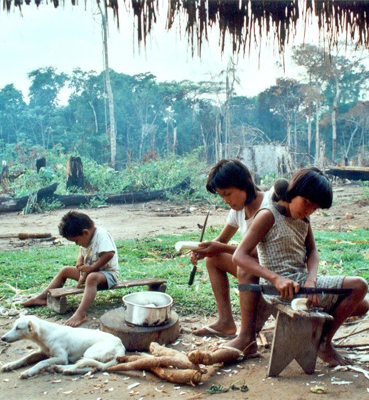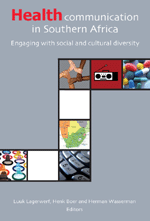Reflections On The CPTS Model Of Interdisciplinarity ~ Festschrift for Dr. Sytse Strijbos
 Introduction
Introduction
In this short paper, I adopt the role of ‘critical friend’ to the Centre for Philosophy Technology and Social Systems (CPTS)[i] research programme, and the contribution of Sytse Strijbos in particular: I believe the CPTS model of interdisciplinarity has some significant strengths, and also some potential weaknesses that the researchers taking it forward might wish to address. Most of my critique refers to Strijbos and Basden (2006a), as this offers the grounding for the rest of the CPTS research programme. However, my focus on this should not be taken as a sign that I regard other contributions as less significant.
Over the coming pages I will first of all highlight what I see as the strengths of the CPTS model, focusing in particular on the value of the systems approach embodied in it, and its potential applicability to technologies beyond information systems (the practical focus of most CPTS authors to date). I will then offer two critiques. The first points to a gap in the model: the omission of ecological systems as an aspect of analysis. The second critique raises some questions about the nature of the links between research at the levels of the artefact and directional perspectives. I suggest that, when there are significant disagreements on the ethics of a technology, to the extent that some researchers wish to prevent its development and others wish to press ahead, we have to ask whether and how interdisciplinary co-operation should proceed.
The Strengths of the CPTS Model
In my view, the CPTS model of interdisciplinarity has several important strengths: it is explicit about its theoretical underpinnings; is inclusive of ethical debates; takes a useful systems approach to understanding the relationships between fields of inquiry; is potentially applicable to a broad range of technologies; and can enable the incorporation of many more disciplines than are currently included in the CPTS research programme. I discuss each of these strengths in turn below.
2.1 The Value of Explicit Theory
The first strength is that there is an explicit theoretical rationale for the focus on basic technologies, technological artefacts, socio-technical systems, human practices and directional perspectives as the principle concerns flowing into interdisciplinary engagements. As Strijbos and Basden (2006a) make clear, these categories are derived from the philosophy of Dooyeweerd (1955). Although I am not in complete accord with Dooyeweerdian thought, I nevertheless appreciate that there is a coherent set of ideas lying behind the CPTS model. This is important because it takes us a step beyond models that are simply born out of strategic alliances between researchers from two or more disciplines who happen to share common interests. While alliances like these can be useful for pursuing focused projects with particular purposes, it is difficult for them to give rise to more general models of interdisciplinarity unless there is a focus on providing some theory that explains why the model might have utility beyond the immediate local circumstances in which it was generated. Read more
A Dooyeweerdian Critique of Systems Thinking ~ Festschrift for Dr. Sytse Strijbos
 Abstract
Abstract
Systems thinking has developed over the decades, into several streams, which seem to operate in parallel with little dialogue between them. Each stresses different theoretical issues or problems but, in addressing them, other deeper problems are revealed that are often ignored. This essay briefly reviews three of the streams with the theoretical issues they tackle, and some of the deeper problems. To address these deeper problems, and also to facilitate dialogue between the streams, Dooyeweerd’s philosophy is employed to reintepret the theoretical issues in new ways, in which meaning is central. This initial proposal calls for further research.
Introduction
In its various forms, systems theory has been employed as a framework for understanding many issues, most related to the relationship between entities and environment. Systems thinking has developed over the decades, into several streams, each of which stresses different theoretical issues: holism, the system, its parts and its environment, and societal systems. As such, each stream throws up new problems, some of which are ignored, (“elephants in the room”). (The use of the word ‘system’ as in ‘systematic’ is not considered here.)
Sytse Strijbos (2010) sought to bring together systems thinking with Dooyeweerdian thinking, especially discussing how systems thinking may be interdisciplinary and bringing in a concern with normativity that most systems thought lacks. However, there has been no systematic consideration of how Dooyeweerdian thinking can dialogue with systems thinking in each of its forms.
This article explores the contribution that Dooyeweerd’s (1955) ideas can make more generally to addressing such problems, including his law-oriented view of subject and object, his idea of irreducibly distinct aspects, and his presupposition that meaningfulness, rather than existence, is the foundation. First, issues that are important in several systems discourses are identified, along with problems. Then these are discussed in the light of Dooyeweerdian thought.
Systems Thinking in its Varied Forms
For convenience of discussion, systems thinking is separated into three streams, which stress different major issues, and each of which contains several discourses. The discourses overlap and some discuss issues from other streams. A number of critical questions or problems will be raised as the discussion proceeds. Read more
Reason, Faith And Practice In Our Common Home, South Africa ~ Festschrift for Dr. Sytse Strijbos
 “No one can be clever and ecstatic at the same time.” – Sir A Quiller-Couch
“No one can be clever and ecstatic at the same time.” – Sir A Quiller-Couch
Introduction
Three elements of the overall theme, Reason, Faith, and the idea of Our Common Home are found in different cultural constructions or formations in the South African context. These formations have often combined or interacted with destructive results, and have at other times formed constructive, life-giving combinations.
Firstly, a few examples will be given of specific cultural formations and combinations of these themes. That will be followed by reflection on how we can arrive at constructive, life-giving combinations of these formations, with a practical example from the African context of what could be done. There are more factors that could be included in the mix that are not considered here.
The view of reason and “our common home” in the Verligte Beweging among Afrikaners
In the 1970’s and the 1980’s there was a movement in the Afrikaner-establishment that was called the Verligte Beweging, the Enlightened Movement, that reminds one of the Aufklärung in Europe. The leading figure of this movement was Willem de Klerk, a theologian and journalist and the brother of FW de Klerk, the leader of the National Party (NP). FW de Klerk was the person who, as president of the white minority government, officially declared that the policy of apartheid would be replaced by a full democracy, in a historic speech on 2 February 1990.
In a book about his brother FW that was published in 1991, Willem de Klerk stated that the basic concept of the Enlightened Movement was togetherness (gesamentlikheid), based on reason as the natural law of the human soul. He quoted the historian Barbara Tuchman’s The March of Folly (1984): “Rejection of reason is the prime characteristic of folly…. When desire disagrees with the judgement of reason, there is a disease of the soul. And when the soul is opposed to knowledge or opinion or reason, which are her natural laws, that I call folly….” (De Klerk, 1991 pp. 130, 144-145).
Togetherness was seen as the opposite pole of separateness (apartheid), which was not rejected out of hand, sometimes for strategic reasons and sometimes, it seems, as a matter of principle. The idea was to find a balance between togetherness with other cultural groups and maintaining an own identity. Willem de Klerk described how this movement convinced the Afrikaner in general, and FW himself, to move their policy from the one pole (separateness) closer to the other (togetherness), and to leave apartheid behind. In his conclusion he talked of FW’s conversion to the idea of togetherness based on reason (1991, pp. 145-146). This thought construction became dominant in Afrikaner circles at the time, and when it combined with the drive for reconciliation of leaders like Nelson Mandela and Desmond Tutu, a peaceful transition to democracy in a deeply divided country became possible, which led to a lot of optimism. This was a noteworthy contribution!
Twenty-five years later this optimism is under a lot of pressure, but it is still alive. The question is if it was, and is, sufficient to put all one’s confidence in reason as answer to all the movements of the human spirit in this turbulent country. Read more
Indigenous Oral Traditions From The Huasteca, Mexico
 This paper deals with indigenous oral traditions in Mexico. It addresses issues of indigenous languages and how they can be documented, preserved and revitalized through projects about oral traditions in a national context in which there is a renewed discussion on multiculturalism and cross-cultural understanding.
This paper deals with indigenous oral traditions in Mexico. It addresses issues of indigenous languages and how they can be documented, preserved and revitalized through projects about oral traditions in a national context in which there is a renewed discussion on multiculturalism and cross-cultural understanding.
In Mexico, the discussion of multiculturalism centers on ‘indigenous issues’, specifically on how indigenous peoples should integrate into the so-called modern, more westerly-orientated rest of the nation. In Mexico, indigenous cultures and languages are still systematically discriminated, as they are often seen as irrelevant remnants of a past that have, at most, mere folkloristic value. Since the 1990’s, public policies regarding indigenous issues underwent a change and now focus on concepts of multiculturalism in order to favor a more equal position for indigenous languages and cultures.
The new policies were adopted after national pressures like the 1994 Zapatista uprising, and followed up on international interests in the situation of indigenous peoples, such as shown through the festivities around the 500th Anniversary of the Discovery of America by Columbus in 1992, or in the declaration of the UN’s First and Second Decade of the Indigenous Peoples (1995-2014). They enhance a novel discourse that includes concepts like cultural diversity, interculturalism, intangible heritage, and other terms that are in accordance with the terminology of international conventions on indigenous issues.
Health Communication In Southern Africa: Condom Use in Tanzania and Zambia: A Study on the Predictive Power of the Theory of Planned Behaviour on Condom Use Intention
 Abstract
Abstract
The aim of this study is to examine determinants of condom use intention of Tanzanian and Zambian high-school students. Additionally, we aim to investigate whether determinants differ among different target (sub)groups. Data were gathered in a sample of high school students from Arusha area, Tanzania (n = 286), and Kabwe area, Zambia (n = 272). The TPB determinants attitude towards condom use and subjective norm explain, respectively, 15.5% and 16.5% of the variance in condom use intention in Tanzania and Zambia, while self-efficacy is not significantly related to this intention in both countries. In most target (sub)groups from Tanzania and Zambia, the same TPB determinants predict condom use intention. Besides the TPB determinants, other variables are significantly related to condom use intention, such as sexual experience and gender. These results vary over the (sub)groups.
The findings of this study prove the utility and global applicability of the TPB on condom use intention in Tanzania and Zambia. Because most subgroups in both countries show the same TPB determinants of condom use intention, cost-effective overall HIV/AIDS prevention programmes can be developed that can easily be adapted for different subgroups in different countries.
Introduction
AIDS (Acquired Immuno-Deficiency Syndrome), caused by HIV (Human Immunodeficiency Virus), is one of the most threatening diseases worldwide (UNAIDS, 2007). Sub-Saharan Africa, the area of Africa south of the Sahara desert, is the most affected region in the world, with AIDS being the leading cause of death in this area. Because relatively little is done on HIV/AIDS prevention and treatment, it is expected that the number of infected people and deaths will rise (UNAIDS, 2007).
HIV infection is often a consequence of a specific behaviour, one of which is unsafe sex (Fishbein, 2000). While condom availability has risen in Sub-Saharan Africa, there are many factors that keep people from using them (AVERT, 2007). Therefore, most HIV/AIDS prevention programmes aim at increasing the use of condoms in order to decrease the risk of infection and restrict the AIDS-epidemic (Bennett & Bozionelos, 2000).
Theoretically, scientific knowledge can contribute to the effectiveness of HIV/AIDS prevention programmes. While some studies found that behaviour change interventions that were explicitly based on theory were not more effective than prevention programmes without a theoretical basis (see Hardeman et al., 2002, for a review), other research showed a higher effectiveness of prevention programmes based on scientific literature (Fishbein, 2000; Gredig, Nideroest & Parpan-Blaser, 2006; Jemmott et al., 2007; Munoz-Silva, Sanchez-Garciá, Nunes & Martins, 2007). A commonly used behavioural model in scientific studies is Ajzen’s Theory of Planned Behaviour (TPB) (Ajzen, 1991). According to the TPB, behaviour is best predicted by asking people whether they have the intention to show this specific behaviour. In turn, behavioural intention is determined by attitude, subjective norm, and self-efficacy. The current study on condom use intention in Tanzania and Zambia used the TPB as a theoretical foundation. Until now, a couple of studies on condom use intention applying the TPB have been conducted in Sub-Saharan Africa. Most of these were carried out in South Africa (Boer & Mashamba, 2007; Bryan, Kagee & Broaddus, 2006; Giles, Liddell & Bydawell, 2005; Jemmott et al., 2007). No studies using the TPB were conducted in Zambia yet, and only one study is available on Tanzania (Lugoe & Rise, 1999). The current study was carried out in Zambia and Tanzania to examine whether the results of studies conducted in South Africa are also valid for other countries in Sub-Saharan Africa. The aim of the study is to examine determinants of condom use intention of Tanzanian and Zambian high-school students. Furthermore, the following subgroups will be compared to identify TPB determinants of intended condom use among specific target groups: males and females, students with and without a steady boy/girlfriend, and students with and without sexual experience. Subgroup analyzes to investigate whether the relation of attitude towards condom use, subjective norm, and selfefficacy to intention varies among specific target groups have hardly been reported in African studies. The research questions are:
* What are the differences between Tanzanian and Zambian high-school students in condom use intention, attitude towards condom use, subjective norm, and self-efficacy?
* What are the determinants of condom use intention of Tanzanian and Zambian high-school students?
* What are the determinants of condom use intention of males and females, students with and without a steady boy/girlfriend, and students with and without sexual experience? Read more
Health Communication In Southern Africa: Social Representations Of HIV/AIDS In South Africa And Zambia: Lessons For Health Communication
 Abstract
Abstract
For people infected and affected by HIV/AIDS various linguistic representations have arisen, which create discourses as coping mechanisms and as systems of significations in order to make sense of HIV/AIDS. The AIDS epidemic has invited scientific efforts to revisit language and its role in the construction, positioning and repositioning of identities within cultural systems. This chapter highlights the relationships between language, culture and human experience. In studying the linguistic constructions of meaning vis-à-vis HIV/AIDS, this chapter heightens our understanding of the role of language and meanings in the creation of stigma. The chapter shows that language use with regard to HIV/AIDS is not neutral but has an ideological function. It plays on existing ideological conceptions as well as brings novel discourses into the sphere of interpersonal interaction. The acknowledgement of the power of language is critical for health communication, especially in multi-lingual ethnic groupings, who share similar linguistic forms. People engage with HIV/AIDS in their daily experiences by using familiar symbols, images, words and proverbs. It is argued in this chapter that this discourse of representation hinders the progress of public health interventions, especially with regard to HIV prevention and treatment with antiretroviral drugs. Public health communication and health promotion cannot merely rely on ‘normative’ linguistic labels to persuade, inform or negotiate health ideals, using the taken-for-granted myths/assumptions about the nature of HIV/AIDS and its effects. Listening to, and adapting the audience’s appropriation of language, especially in contemporary times of HIV/AIDS, is important for audience-tailored messaging in order to achieve effective and meaningful negotiation with individuals and communities, so that collective efficacy is strengthened.
Introduction
The HIV/AIDS pandemic has covered the world in a cloud of despair. The Panos Institute expresses it thus: “so much energy for so little hope” (Scalway, 2002). By the year 2001, 36 million people were living with HIV worldwide (Piot, Bartos, Ghys, Walker & Schwartlander, 2001), while sub-Saharan Africa shared the largest burden of the disease (DFID, 2003; Piot et al., 2001; The Henry J. Kaiser Family Foundation, 2004). By 2004, sub-Saharan Africa was home to 66 (25 million) of people living with HIV/AIDS (The Henry J. Kaiser Family Foundation, 2004). In 1999, this figure was representative of the entire population of Africa, 23.5 million out of an adult population of 268.9 million (Kelly, 2002). Contrary to the optimism of the Kelly-led report, the battle is far from being won (Kelly, 2002). Latest updates from UNAIDS give little hope of abating the epidemic, though stability is being recorded in some areas:
The global epidemic continues to grow and there is concerning evidence that some countries are seeing a resurgence in new HIV infection rates which were previously stable or declining. However, declines in infection rates are also being observed in some countries, as well as positive trends in young people’s sexual behaviours (UNAIDS, 2006). Read more


